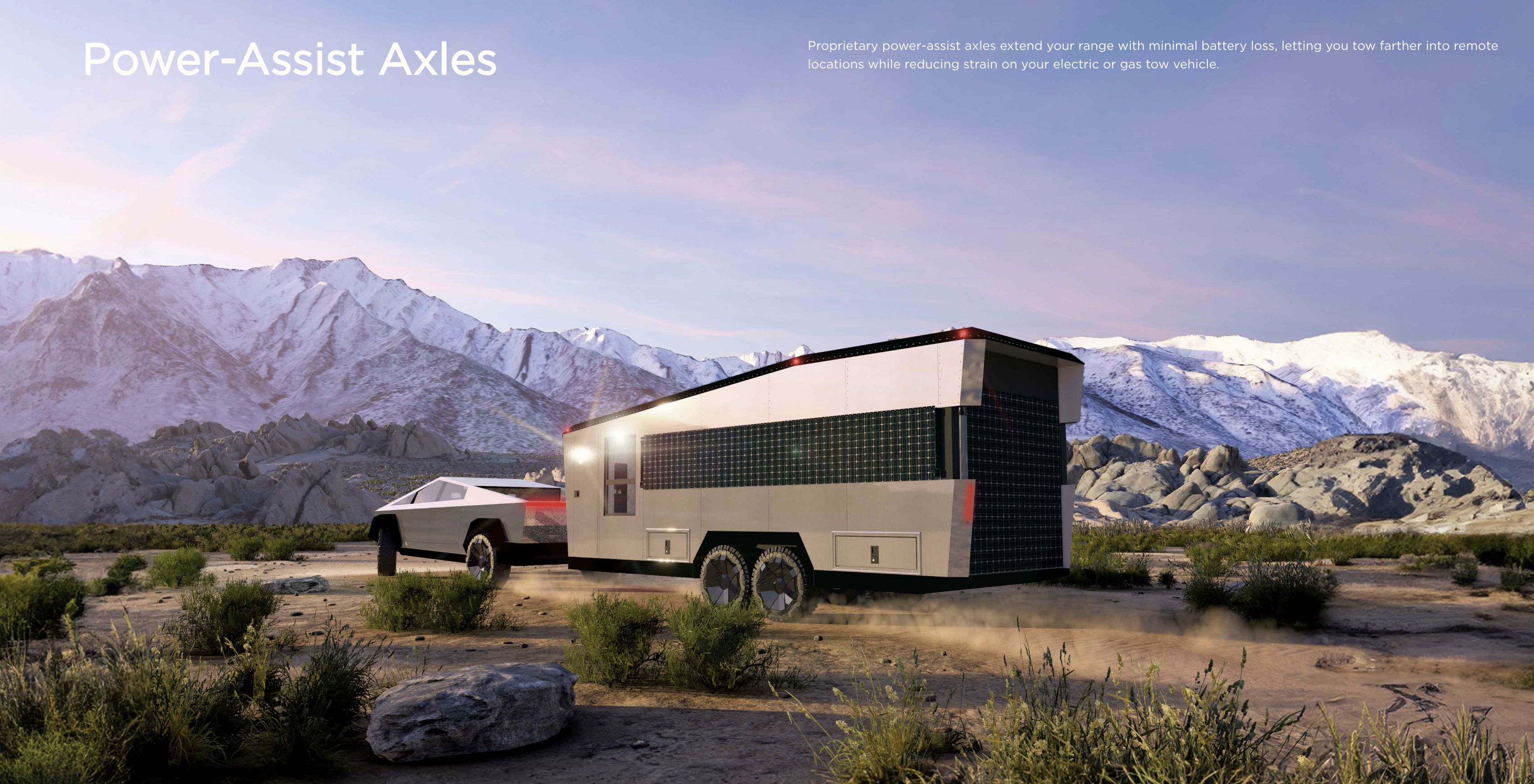Support CleanTechnica’s work through a Substack subscription or on Stripe.
Bangkok’s streets tell the story of Thailand’s transportation evolution through the distinctive puttering of its three-wheeled tuk-tuks. What began as noisy, smoke-belching two-stroke engines in the 1960s transformed into cleaner LPG-powered vehicles in the 1990s, and now these iconic vehicles are completing their technological journey with electric powertrains that promise to reshape Bangkok’s urban mobility landscape.
The Three-Act Evolution Of Thailand’s Most Famous Vehicle
The tuk-tuk’s fuel evolution mirrors Thailand’s broader approach to environmental progress through practical, incremental change. The original two-stroke engines that gave tuk-tuks their characteristic sound also made them significant contributors to Bangkok’s air pollution problems. The transition to liquefied petroleum gas in the 1990s reduced emissions while maintaining the vehicles’ economic viability for drivers operating on thin margins.
The current shift to electric powertrains represents the most dramatic change yet. Unlike the previous fuel transitions that primarily affected the engine bay, electrification transforms the entire vehicle architecture, operational economics, and even the business models surrounding these ubiquitous urban workhorses.
MuvMi: Pioneering The Electric Tuk-Tuk Revolution
At the forefront of Thailand’s electric tuk-tuk transformation stands MuvMi, an app-based transportation service that has deployed over 600 electric tuk-tuks across 12 Bangkok neighborhoods as of 2024. Unlike traditional tuk-tuk operations where individual drivers own their vehicles, MuvMi operates a centrally managed fleet that passengers can summon through a smartphone application.
The company’s electric tuk-tuks eliminate the noise and exhaust emissions that have long characterized Bangkok’s street soundscape. More significantly, they reduce PM 2.5 particulate emissions, directly addressing Bangkok’s persistent air quality challenges. These six-seater vehicles are specifically designed for Bangkok’s dense urban environment, providing first- and last-mile connections to the city’s BTS Skytrain and MRT subway networks.
MuvMi’s operational model addresses several traditional challenges facing tuk-tuk drivers. Instead of purchasing and maintaining vehicles independently, drivers operate company-owned electric tuk-tuks, reducing their capital requirements and maintenance responsibilities. The app-based booking system provides more predictable income streams compared to traditional street-hailing operations.
Massive Infrastructure Investment Signals Market Confidence
The scale of investment in electric tuk-tuk infrastructure demonstrates serious commitment to the sector’s transformation. In January 2024, the Asian Development Bank (ADB) and BANPU signed a 2.4 billion baht loan agreement to finance 1,500 six-seater electric tuk-tuks and their associated charging infrastructure for micro-scale transit services throughout Bangkok.
This investment level indicates institutional confidence in electric tuk-tuks as viable urban transportation solutions rather than novelty projects. The funding specifically targets micro-transit services, recognizing that electric tuk-tuks serve distinct mobility needs in dense urban environments where larger vehicles face navigation and parking constraints.
The charging infrastructure component is particularly critical for fleet operations. Unlike private electric vehicle owners who can charge at home, commercial tuk-tuk operations require reliable, strategically located charging networks that support continuous daily operations. The ADB-BANPU funding addresses this infrastructure gap systematically.
Government Conversion Programs Accelerate Adoption
Beyond new electric vehicle deployment, Thailand has implemented pilot programs offering 100% subsidies for converting existing internal combustion engine tuk-tuks to electric powertrains. These conversion programs acknowledge the economic realities facing current tuk-tuk operators who may lack capital for new vehicle purchases.
Conversion programs serve multiple policy objectives simultaneously. They accelerate emissions reductions from the existing tuk-tuk fleet, support local automotive service industries developing conversion expertise, and provide pathways for traditional operators to participate in the electric transition without complete vehicle replacement.
The subsidy structure reflects understanding of tuk-tuk economics, where drivers typically operate on daily income cycles with limited savings for capital investments. By removing financial barriers to electrification, the programs enable rapid fleet transformation without displacing existing operators.
Market Performance: Temporary Decline Masks Long-Term Growth
Data from Thailand’s electric vehicle market shows that electric three-wheeler adoption rates declined from 32% to 13% between 2023 and 2024. However, this apparent setback primarily reflects the completion of initial government fleet orders rather than market rejection of electric technology.
The 2023 adoption rate of 32% represented unusually high purchase volumes driven by public sector procurement, particularly Bangkok Metropolitan Administration orders for municipal services. The subsequent decline to 13% indicates market normalization as private sector adoption patterns establish themselves.
This market dynamic is common in emerging vehicle technologies where initial government purchases create artificially high adoption rates that subsequently moderate as private markets develop. The key indicator is not the year-over-year percentage change but the absolute growth in electric tuk-tuk deployment and operational expansion.
Technical Advantages Drive Operator Interest
Electric tuk-tuks offer compelling operational advantages beyond environmental benefits. The vehicles operate with significantly lower noise levels, improving working conditions for drivers who spend entire shifts in small, enclosed cabins. Reduced vibration from electric motors also decreases operator fatigue during long driving periods.
Maintenance requirements for electric powertrains are substantially lower than internal combustion engines, particularly the high-maintenance two-stroke engines that powered many traditional tuk-tuks. Electric motors have fewer moving parts, require no oil changes, and eliminate timing belt, spark plug, and carburetor maintenance.
Operating costs favor electric powertrains in Thailand’s energy market context. Electricity costs are generally lower and more stable than gasoline or LPG prices, providing operators with more predictable daily operating expenses. This cost predictability is particularly valuable for drivers operating on narrow profit margins.
Tourism & Local Transportation Integration
Electric tuk-tuks address different market segments within Bangkok’s transportation ecosystem. Tourist-focused operations benefit from the novelty factor and reduced emissions, appealing to environmentally conscious travelers. The quieter operation also enables conversations during rides, potentially improving the tourist experience.
For local transportation, electric tuk-tuks integrate with Bangkok’s broader public transit network. Their role as first- and last-mile connectors becomes more valuable as the city expands its rail transit systems. Unlike larger vehicles that cannot navigate Bangkok’s narrow sois (side streets), electric tuk-tuks maintain access to residential areas while providing clean transportation.
The app-based booking model particularly appeals to younger Thai consumers comfortable with digital platforms. This demographic shift could expand tuk-tuk ridership beyond traditional users, creating new market opportunities for operators.
Regional Implications & Export Potential
Thailand’s electric tuk-tuk development has implications beyond domestic transportation. The country’s automotive manufacturing expertise positions it to export electric three-wheelers to other Southeast Asian markets facing similar urban mobility challenges.
Cities across the region operate various forms of three-wheeled transportation, from Philippines jeepneys to Indonesia’s bajaj. Thailand’s experience developing electric versions could inform similar transitions throughout Southeast Asia, potentially creating export opportunities for Thai manufacturers.
The technical solutions developed for Bangkok’s specific conditions — high temperatures, heavy traffic, frequent stops — are applicable to other tropical urban environments. This transferability could position Thailand as a regional center for electric three-wheeler technology development.
Challenges Ahead: Infrastructure & Economics
Despite positive developments, electric tuk-tuk adoption faces ongoing challenges. Charging infrastructure remains concentrated in central Bangkok, limiting operational ranges for drivers serving outer areas. Expanding charging networks to support comprehensive city-wide coverage requires continued investment coordination between public and private sectors.
Driver training and familiarization with electric vehicle technology represents another implementation challenge. Many tuk-tuk operators have decades of experience with internal combustion engines but limited exposure to electric powertrains. Training programs must address both technical knowledge and operational practice differences.
The economic transition period poses risks for individual operators. While electric vehicles offer long-term cost advantages, the initial transition requires adapting to different maintenance schedules, charging routines, and operational patterns. Support systems must help operators navigate this transition successfully.
Future Outlook: Beyond Transportation To Urban Integration
Electric tuk-tuks represent more than vehicle electrification; they demonstrate Thailand’s approach to sustainable urban development through practical innovation. The success of electric three-wheeler programs could inform similar transitions in other vehicle categories and urban contexts.
Integration with smart city initiatives offers additional development opportunities. Electric tuk-tuks equipped with GPS tracking and digital payment systems could provide data supporting urban planning decisions, traffic management optimization, and transportation network development.
The evolution from two-stroke to electric powertrains symbolizes Thailand’s broader transformation from a developing economy focused on basic mobility provision to a middle-income country prioritizing environmental quality and technological innovation. In Bangkok’s busy streets, the quiet hum of electric tuk-tuks signals not just cleaner air, but a fundamental shift in how Thailand approaches the balance between economic necessity and environmental responsibility.
As these iconic vehicles complete their electric evolution, they carry forward decades of cultural significance while embracing technologies that promise cleaner, quieter, and more sustainable urban futures. The tuk-tuk’s journey from noisy polluter to clean urban connector reflects Thailand’s own evolution toward sustainable development leadership in Southeast Asia.
Sign up for CleanTechnica’s Weekly Substack for Zach and Scott’s in-depth analyses and high level summaries, sign up for our daily newsletter, and follow us on Google News!
Have a tip for CleanTechnica? Want to advertise? Want to suggest a guest for our CleanTech Talk podcast? Contact us here.
Sign up for our daily newsletter for 15 new cleantech stories a day. Or sign up for our weekly one on top stories of the week if daily is too frequent.
CleanTechnica uses affiliate links. See our policy here.
CleanTechnica’s Comment Policy




